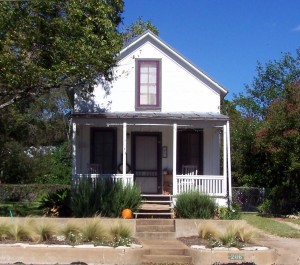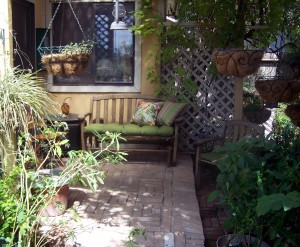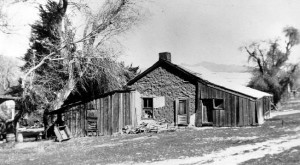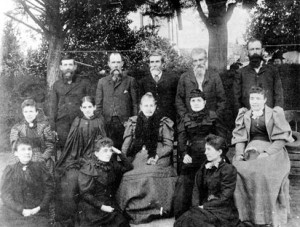Courtesy of a link from an old FEN-Misawa co-worker –
But it bloody pours. Here I am, starting the marathon of book events for my own stuff and for Blondie’s origami art, which runs from early October until well into December, (Lord willing and the Ebola don’t rise) and suddenly all the Tiny Publishing Bidness clients who have been languidly considering their potential books – some of them from last year or this summer and one of them from out of the clear blue sky – want to move ahead with their projects. Now, if not a day or so ago. It should have been a warning to me that the business bank accounts were all at low ebb … that’s when something happens to fill them all up again. It never fails – something always appears, just in the nick of time. There was the written-content job of so many chapters for a publisher of study guides who found me through the milblog; they wanted someone with military experience who could also write to order and somehow stumbled onto little ol’ me. That project upheld the lifestyle at Chez Hayes for nearly half a year; I was in two minds about committing to it, but closed my eyes and plunged in away. Then there was the document transcription project … again, good for maintaining the lavish Chez Hayes lifestyle for most of a year, when taken in together with the other writing projects and sales of my own books.
I had a lovely book event in Fredericksburg early this week – a local book club contacted me through my website; would I come to their social, and more importantly – do a guided tour of the spots in Fredericksburg which featured in the Adelsverein Trilogy? One private tour for the club members, and another the following day for the general interested public? As it was mapped out, the tour comes out to a shade less than three miles, to cover it all – from the town cemetery and that little church building which served the black community in the mid-1840s, all the way to the Marienkirche, which served the Catholic community from the earliest days. Good thing I suggested that everyone wear comfortable shoes … and that there were plenty of stopping places with shaded benches, and that at the point of two-thirds into the tour we were at the old established town square, where there is a very clean and well-maintained public lavatories and some picnic tables in the shade. The ladies of the book club were enormously welcoming, and hospitable, having secured us a room for one night at the Sunday House – which we fell upon with gratitude, being completely exhausted by the tour and the evening meeting. Yes, I will try to come to book-club meetings which have read the Trilogy or any of my books, as long as such are in a commutable distance from San Antonio. I am not such a big-name author that I can be snotty about such invitations.
Fredericksburg was blissfully uncrowded on a Monday, and Tuesday morning, and a two-hour long walk, plus some evening socializing let us catch up on all the local gossip, and note some changes in the town: a wonderful and theatrical 1920s Spanish Colonial style house on Austin Street has been torn down, to the regret of all; an apparent victim of black mold and extensive termite damage being found upon a new owner commencing renovations. But a classic German-Texas style house on Adams – which was under renovation for as long as I can recall has finally been finished very charmingly as a day-spa. There are now little bed and breakfast accommodations all over the historic part of Fredericksburg, tucked behind old houses; one of the club members told us that there were 350 B&Bs in town now, not to mention several good-sized hotels. And there is a new museum going in – a Ranger museum, next to historic Fort Martin Scott. That makes four museums in a single small town, which must be some kind of record. Alas, the yearly Comanche pow-wow used to be held on the land where they are building the museum – and the pow-wow is banished to the Gillespie County fairgrounds.
Kenn Knopp, the local historical expert who was a considerable mover and shaker in Fredericksburg and was kind enough to read the Trilogy in manuscript and approve of it all with extravagant enthusiasm passed on last year. I had kind of expected something had happened to him, as he was not in the best of health the last time we were in touch, and he dropped off Facebook entirely … still, I wish that I had known in time to go to the memorial service.
Finally – one of the walking tour participants told me that the corner plot which I allocated in fiction to the Steinmetz family was actually his family’s town plot, and that they held onto it until the 1940s, when they sold it to the church which presently has their activity center on the site. He’s a Luchenbach, and an old friend of Monroe Behrend, the master of the fast armadillo. Small towns – you have to love them, but also be careful, because everyone knows everyone else, or they are related to everyone else. So, that’s my week – and I’ve written this between doing up a couple of contracts and estimations for the new projects.
Early this month, my daughter and I clubbed together and bought a DVD collection of Mel Brooks movies for our evening TV-watching pleasure. I think we already had Blazing Saddles on DVD, and maybe The Producers and Young Frankenstein on VHS – but the plain fact is that we didn’t have any of the rest, and I only dimly recalled seeing many of them on original theatrical release, most usually at tiny AAFES movie theaters in various overseas locations. Seriously, it took years to get over expecting to stand up for the national anthem before the main feature, along with the usual wits shouting “Play ball!” as soon as the last strains and the flapping flag in slow-mo mistily faded from the screen. My daughter hadn’t seen any of them, save the aforementioned two, and so … we’ve been happily entertained, by working our way through the collection. It’s often noted, by no less than Mel Brooks himself that Blazing Saddles probably couldn’t be made today. Oh, let me count the ways, from the non-stop use of the n-word, gleeful use of national stereotypes, the campfire scene, the breaking of the fourth wall, the campy and screamingly gay movie director… yep, the professionally aggrieved would be screeching to high heaven.
Young Frankenstein doesn’t hit on quite so many social sore points as Blazing Saddles … but History of the World Part 1 certainly does. That’s another one which probably would send the professionally aggrieved on fire. As for Silent Movie, that was kind of a one-joke sketch fattened out to feature movie length. My daughter didn’t know that Mel Brooks and Anne Bancroft were married, or that Burt Reynolds and Paul Newman had ever looked so very young. High Anxiety was funny enough, as a pastiche of practically every movie Alfred Hitchcock ever made. So – on to The Twelve Chairs and Robin Hood: Men in Tights in the coming week. Don’t know how those two will manage to offend the easily offended, but I have hopes. It is kind of dispiriting, when I remember funny, slapstick and anarchic humor like Mel Brooks, or those movies like Airplane and Top Secret! Produced by Zucker, Abrahams and Zucker, or mockumentaries like Spinal Tap and confections like Ghostbusters … and then consider at the great earnest blocks of concentrated dullness coming out today. There are comedies still being produced of course … this is a list of what is currently available on Netflix, but scrolling through it, I just don’t fell much like watching any of them. Quite honestly, most of them just don’t seem like all that much fun.
We spent all of the Labor Day weekend cleaning up and reclaiming the back porch – which in the last year or so had become a repository for all the stuff now neatly stored away in the shed.
Oh, and a leeetle too much spent at the new Garden Ridge outlet store, on cushions and pillows for the glider and the chair … against the day when it is cool enough to sit outside of a late afternoon, and enjoy the sunset…
(I have been sidelined this week, working on a chapter of The Golden Road, and discovering about the place where Fredi and the herd of Texas cattle would have finished in California)
California marked the high tide-line of the Spanish empire in the New World. The great wave of conquistadors washed out of the Iberian Peninsula in the fifteenth century looking for gold, honor, glory and land, roared across the Atlantic Ocean, sweeping Mexico and most of South America in consecutive mighty tides, before seeping into the trackless wastes of the American Southwest. Eventually that tide lapped gently at the far northern coast, where it dropped a chain of missions, a handful of military garrisons and small towns, and bestowed a number of property grants on the well-favored and well-connected. There has always been a dreamlike, evanescent quality to that time – as romantic as lost paradises always are. Before the discovery of gold in the millrace of a saw-mill built to further the entrepreneurial aims of a faintly shady Swiss expatriate named John Sutter, California seemed a magical place. It was temperate along the coast and perceived as a healthy place; there were no mosquito-born plagues like malaria and yellow fever, which devastated the lower Mississippi/Missouri regions in the 19th century. Certain parts were beautiful beyond all reasoning, and the rest was at the least attractive. The missions, dedicated primarily to the care of souls also had an eye towards self-sufficiency, and boasted great orchards of olives and citrus, and extensive vineyards. The climate was a temperate and kindly one in comparison with much of the rest of that continent; winters were mild, and summers fair.
It was a rural society of vast properties presided over by an aristocracy of landowners who had been granted their holdings by the king or civil government. Their names still mark the land in the names of towns, roads and natural features; Carrillo, Sepulveda, Verdugo, Vallejo, Dominguez, Pico, Castro, Figueroa, and Feliz, among many others. They ran cattle or sheep on their leagues – the hard work was mostly performed by native Californian Indians; those who had survived such epidemics as were brought inadvertently by Europeans and who were amenable to being trained in useful agricultural skills. These vast estates produced hides, wool and tallow; their owners lived lives of comfort, if no very great luxury. From all accounts they were openhandedly generous, amazingly hospitable, devout … a little touchy about personal insult and apt to fight duels over it, but that could said of most men of the 18th and early 19th centuries.
One of the notable estates was that which lay around the present-day hamlet of Warner Hot Springs. Besides being a very fine property, it was also located the southern emigrant trail – that which ran through south Texas and New Mexico territory to Yuma, at the confluence of the Gila and Colorado Rivers, and terminated in Los Angeles. Eventually, the Butterfield stage line would follow this trail – and the ranch at the place where the road to San Diego diverted from it became a stage stop. The property also was the object of considerable legal wrangling – it was inadvertently granted to two different claimants; Silvestre de la Portila in 1836, and transplanted Yankee, John Joseph ‘Juan Jose’ Warner eight years later. Juan Joseph Warner built an adobe house on the property, and conducted ranching and trading operations until an uprising by local Indians drive him out in 1851. In the meantime, Silvestre de la Portila had deeded the property to Vincenta Sepulveda, the daughter of a long-established and important local family. Eventually, the powers that be decided in favor of Dona Vincenta, who at the age of 21 had married another scion of a well-to-do ranch family, Tomas Antonio Yorba, who was more than twice her age. Yorba and his wife set up first at his family property at Santa Ana, in present-day Orange County, where they ran cattle for their hides and tallow, and operated a small general store, trading all kinds of general goods, groceries and luxuries. Their house was a rather splendid one; they impressed many visitors with not only the generous nature of their hospitality, but order and luxury of their house – better adorned and furnished than the usual hacienda. After ten years of productive and apparently happy marriage Tomas Yorba died, leaving his wife the residence, large herds of sheep and cattle, considerable jewelry and the care of their four surviving children. She continued managing the property, her household and her business; a wealthy, attractive and able young woman. She did not remain a widow for very long; she married again, to Jose Ramon Carrillo, of San Diego, who had managed a large property in northern California. Romantically, they met at the wedding of Dona Vincenta’s niece to an office of the Mexican army. Jose Ramon Carrillo had a reputation for physical courage, which was not based solely on his experiences as a soldier. (He had engaged in several skirmishes between Californios and the Anglo members of the Bear Flag party, or during the Mexican War and in fighting with hostile local Indians, which was pretty much what had been expected of a man of his age and class.) But his most famous fighting exploit wasn’t with other men at all – it was with a bear.
When out riding with friends in the Sonoma foothills some time before his marriage, the party spotted a bear, at some distance. Carrillo proposed (and there is no evidence that liquor was involved in any) that he fight the bear … on foot and alone. He took a mochila from his saddle – a flap of leather used to attach saddle-bags and wrapped it around his left arm – and a large hunting knife with a keen blade in his right. When he advanced on the bear, it charged him; Carrillo shielded himself with his left arm, and thrust with the knife into the bear’s torso. Within a very short time, the bear lay dead before him. On another occasion, Carrillo attempted to lasso another bear, from horseback. In the heat of the chase, bear, horse and rider fell into a five or six foot deep chasm, hidden until that very moment by dense brush. The abruptness of the fall removed all fight from the bear – and it tried to scramble up the steep side of the pit. Realizing that there was no scope for fighting the bear in the ditch and that discretion might be the best part of valor, Carrillo braced himself under the bear’s hindquarters and gave a good push with all of his strength. The bear scrabbled at the edge of the pit, got over it and promptly ran away.
By the mid-1850s, Dona Vincenta had clear title to the former Warner property; she and her new husband moved there, built an even grander house – an establishment which also served as a stage station, and on the eve of the Civil War, Don Ramon Carrillo applied for the position of post-master … the rancho was also a post office. During the war itself, he also served as a spy and scout for the Union Army in the Sonora. There were shadows falling on him, however; a political and business rival was found dead, shot in the back by person or persons unknown late in 1862. He was interviewed under oath by a court in Los Angeles, and released – the court having found nothing to charge against him.
Two years later, Don Ramon also fell to an assassin’s ambush. The murderer – again – was never identified, and at the age of 51, Dona Vincenta was again a widow. She continued to manage the ranch, with the aid of her grown son for another five or six years, before moving to Anaheim, and to a long retirement in the house of her married daughter; Dona Vincenta lived to the age of 94. The ranch property was sold in the 1870s, continuing as a profitable sheep ranch for the remainder of the century and into the next. The site is now a museum, and open to the public.




Recent Comments